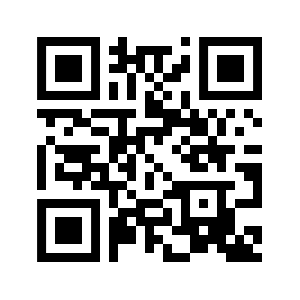
Application of Virtual Reality (VR) in Facility Management Competency-based Training (CBT) in the Era of Industrie 5.0
Educational Technology CybersecurityReceived 14 Mar 2024 Accepted 08 Apr 2024 Published online 09 Apr 2024
ISSN: 2995-8067 | Quick Google Scholar
Previous Full Text
Massive Solar PV Potential in Sri Lanka


Received 14 Mar 2024 Accepted 08 Apr 2024 Published online 09 Apr 2024
This case study investigates the implementation of Virtual Reality (VR) technology in facilities management Competency-Based Training (CBT) within one of Singapore’s leading facilities and township management companies. Traditionally, workplace training in facility management has relied heavily on lecture-based methods, often resulting in insufficient preparation and a high turnover rate among newly onboarded staff. To address this challenge, this study explores the conversion of training materials into VR-based courseware, enabling immersive and interactive learning experiences.
Two groups of newly onboarded staff underwent either traditional lecture-based or VR training sessions. Results indicate that those trained using VR exhibited a better comprehension of the material and higher levels of motivation compared to their counterparts in the traditional lecture-based group. However, it was noted that VR training carries the risk of cybersickness, with some participants reporting symptoms such as dizziness. To mitigate this issue, insights from existing literature on cybersickness are incorporated to enhance future VR training materials.
This paper studies the application of VR in Facilities Management Competency-based training within the discourse of Industrie 5.0, the latest evolution of industrial technology that emphasizes human-machine collaboration and smart technologies such as VR. By leveraging VR technology for training purposes, this initiative aligns with the principles of Industrie 5.0, fostering innovation and efficiency in facility management practices. Overall, this research underscores the potential of VR in revolutionizing training methodologies within the practices of facilities management while addressing associated challenges to ensure optimal learning outcomes.
Constructivism is a learning pedagogy that states that people gain understanding and knowledge through experiencing and reflecting on their experiences []. The newly gained knowledge is built on the foundation of old knowledge as well as undertaking real tasks with objectives [,]. In other words, constructivist learning will take place in a constructivist learning environment where the learner is exposed to the material being studied []. However, such an environment is usually not readily available especially when learning takes place in a traditional lecture-based setting. With the advancement of technology, a constructivist learning environment can be easily recreated using immersive media such as VR and Augmented Reality (AR). In VR, the user is completely immersed in a virtual environment and cannot see the real world around him. AR, on the other hand, exposes the user to the actual environment with virtual objects superimposed on it []. With technological advancement, more subtypes of VR and AR will emerge and these immersive media can be placed on a virtuality continuum as described by Milgram and Kishino [].
Studies pertaining to the benefits of VR/AR application in education especially in the teaching of Science, Technology, Engineering, Arts, and Mathematics (STEAM) skills have been widespread since its introduction. The literature was compiled and examined by Bacca, et al. [], Radu [], Altinpulluk [], Jesionkowska, et al. [], and Bower and Jong []. Most of the literature shows that VR/AR helps to increase learners’ motivation, capture learners’ attention, and increase content understanding and memory retention. Wu, et al. [] and Radu [] also highlighted various issues pertaining to the usage of immersive media in education. Some of them include usability difficulties, learner’s inherent differences leading to uneven learning outcomes, and learners being overwhelmed by information. These issues, however, can be addressed via the allocation of more resources to prepare the VR devices prior to the course, scaffolding, and segmenting course content to the comfort of the majority of learners.
Aside from education, VR/AR technology is also used in the medical trade to train surgeons [,], industrial maintenance and assembly [-], tourism especially when showcasing museum exhibitions [] and facility management [,]. Singapore only saw an increased in adoption of immersive media as a means to uplift the tourism sector when the country went into lockdown during the Covid-19 pandemic []. This delayed adoption was likely due to cost pertaining to the purchase and maintenance of the VR/AR hardware and software, as well as the lack of dedicated personnel to develop the associated materials [].
In this paper, we have identified the facility management industry to pilot a VR training program using tools readily available in the market. Typically, facility managers are made to go through traditional lecture-based and on-the-job training after being deployed to their respective facilities. However, this ineffective and untimely training affects the proficiency, along with the morale and confidence of the new staff resulting in a high turnover rate. Therefore, a preliminary study was conducted to evaluate the benefits of adopting VR in the training of facility managers. The effectiveness of the VR training program is then evaluated using a post-training quiz, followed by a survey and subsequently an oral interview with the facility managers.
The work scope of the Facility Manager (FM) spans multiple disciplines. They are not required to possess specialized skills like an engineer or architect. However, facility managers need to have an adequate understanding of various disciplines to ensure the functionality of the physical environment through the integration of people, places, processes, and technology []. Consequently, newly on-board FMs especially young graduates often face an uphill task of having to digest a large amount of information pertaining to the facility they are posted to. Often, this information is accompanied by history unique to the facility and its associated equipment and incomplete understanding could exacerbate the existing problem. This, coupled with ineffective training, often leads to high turnover rates in Facility Management companies.
In this project, we collaborated with one of Singapore’s largest estate and property management companies. The company has a track record of township management and has managed many public housing estates, wet markets, food centers, and vehicle parking facilities. To date, they are still adopting traditional classroom, lecture-based training for their newly on-board staff. Training for new staff usually occurs one to two months after onboarding due to the need to consolidate staff at different onboarding times and is further limited by the availability of trainers (usually the seniors managing the facilities). The difficulty of face-to-face training was exacerbated during the Covid-19 pandemic when Work from Home and social-distancing measures were implemented []. Not with standing, facility management services remain essential during the lockdown period. This can be challenging for new staff because other than common areas, FMs also need to conduct their inspection checks on restricted zones like rooftops, pump rooms, and switchrooms. As these areas are commonly out-of-bounds, newly onboard staff can only visualise the maintenance scenario from the limited images and explanations provided by the lecture notes. The uncertainty that comes from the lack of training can lead to mishandling of equipment resulting in irreparable or costly damage. Inadequately trained facility managers might also overlook important work safety procedures leading to severe injury or fatality, especially at hazardous locations like switchrooms and roofs.
The creation of the VR Training program will provide timely relief to these newly on-board staff by allowing them the opportunity to familiarise themselves with the environment prior to having to maintain and manage them. It also allows the learners to learn independently at their own pace.
20 staff were selected for the purposive study, whereby participants, cases, and data are selected by the researchers because they are considered to be the most relevant and valuable to address the research question or achieve the research objectives. This method allows researchers to focus their investigation on particular aspects of interest and tailor their sampling strategy accordingly, aiming for depth rather than breadth in understanding the phenomenon under investigation. Out of the 20 participants, 10 were introduced to lecture-based training while the other 10 were introduced to VR-based training. All the participants were then subject to a test to evaluate their understanding and proficiency. A survey was also conducted to appraise their level of satisfaction with regard to training quality. Anecdotal comments from individuals based on their own experiences or perceptions provided valuable insights, viewpoints, and illustrative examples to support the argument and findings of this study.
Table 1 lists the demographics of the selected staff. Each group comprised 10 participants, i.e., three seniors above the age of 50 and seven young adults. The highest education attained by the seniors was Secondary level, which is the equivalent of high school. They are staff with 1 year or less of working experience in property or facilities management, and who have made career switches and are currently undergoing a conversion course to be a facility manager. The young working adults are a mixture of young graduates of diploma and degree level with varying years of experience. The average years of experience of the T and V groups are 2.9 and 4.6 years, respectively. Despite this difference, we have selected candidates who have no experience with the selected training locations to ensure an equitable starting ground. Participants’ informed consent has been obtained for carrying out the study and its publication.
Competency-based training stands apart from conventional training methodologies by prioritizing the outcomes achieved rather than solely focusing on the training process itself. This approach is centered on cultivating the capabilities or Knowledge, Skills, Attitudes, and Values (KSAVs) essential for proficient performance [,]. Unlike traditional training models that rely on standardized tests and minimum passing grades to assess proficiency, competency-based training (CBT) adopts a multifaceted approach to evaluate competence. In CBT, proficiency is assessed through a combination of diverse methods aligned with predetermined learning outcomes and assessment criteria []. This methodology ensures that the workforce in Facilities Management is equipped with the requisite technical skills to navigate technological advancements effectively. In this case, by tailoring training to industry-specific standards and on-the-job requirements, CBT facilitates the immediate and long-term alignment of training outcomes with industry needs, thereby fostering a workforce adept at meeting the evolving challenges of the Facilities Management sector. Figure 1 shows the competency-based framework.
For this study, three locations (Switch room, pump room, and rooftop) were selected for conversion to VR training because of the large amount of information associated with the maintenance of such dedicated facilities. Moreover, these locations are generally out of bounds hence the in-coming facility managers would be able to start training from a clean slate thereby making the comparison fairer.
A 360-degree panoramic camera (Samsung Gear360) was mounted on a tripod and placed in the space of interest to capture images within the room. Images were then exported to the Samsung Gear360 Action Director for stitching and post-production. Subsequently, stitched and edited images were uploaded to Tour Creator to notate Points of Interest (POIs). POIs are specific locations in the 360-degree images and hold additional information needed by the facility managers. Figure 2 shows the POIs, labelled from 1 to 5, within the switchroom. Table 2 describes details pertaining to each POI.
Staff undergoing VR training would don a VR headset and be “teleported” to the training environment through the headset. The staff could navigate around the training grounds at their own pace. To evaluate the effectiveness of the VR training, both groups of staff would be subjected to a post-training quiz and survey. The post-training survey was designed to examine the course quality, and contribution of the training and to provide further feedback on the training methodology.
Whilst no staff failed the quiz, it is evident that staff who underwent the VR training generally fared better. Since the demographics of staff from both groups were comparable, results from the post-training quiz hence implied that the provision of an immersive learning experience aided better understanding and enhanced memory retention within learners. We looked at feedback gathered from the post-training survey to understand the contributing factors behind this outcome (Figure 3).
With the same amount of training material delivered in a more interactive and immersive format, staff were able to maintain their concentration hence finding the pace of delivery and duration of the VR training course favourable compared to the traditional lecture-based training course (Figure 4). The following was reflected in their rating for the quality of training. In general, Figure 4 shows that staff preferred the VR Training more than the lecture-based training.
The new staff were also asked to rate their degree of competency before and after the course. Staff undergoing the lecture-based training only saw marginal improvement in their competency where 40% of the staff improved from poor comprehension of the competency to either fair or satisfactory. On the other hand, there was a much more significant improvement in competency for staff undergoing VR training. The number of staff who rated their competency as “very good” increased by 70% after the VR training. The last two questions from Figure 5 further reinforce this observation.
Figure 6 shows an overwhelmingly positive response to the use of VR training. This is congruent to the oral feedback obtained from staff undergoing lecture-based training where most find the lecture notes lengthy and thus unable to capture their attention. The technical portion was also especially challenging for the new staff since the limited number of images made it hard to comprehend the maintenance of a switchroom from a broad to narrow perspective. For example, the staff were unable to visualise the components on a main switchboard from the lecture notes but were able to better appreciate when they were “walking” through the room and interacting with the POIs which highlighted the respective components. Results from the post-training quiz and survey show that the constructivist approach of placing the learners in a context (virtual environment) can improve learning performance and spark learning interest and efficiency [,].
Despite showing interest in the VR training, some of the participants also mentioned that the content can be hard to follow while others experienced dizziness after a long VR training session. This former effect was also registered in the literature that has applied AR/VR in education [-]. The latter symptoms are likely to be associated with cybersickness which is a long-standing issue with the usage of VR devices such as head-mounted displays. Cybersickness is another subset of motion sickness where users of technologies associated with AR and VR experience unpleasant symptoms such as dizziness, eyestrain, blurred vision, headache, difficulty focusing, nausea, and even stomach discomfort [,].
The most widely accepted explanation for cybersickness is a sensory mismatch between the visual and vestibular senses also known as the sensory conflict theory [,]. These could be due to a visual-vestibular mismatch, whereby users experience rapid visual movements without corresponding physical movements, thereby causing a dissonance between what the eye perceives and what the inner ear senses which confuses the brain and induces dizziness. It could also be due to latency and lag between the user’s movements and the corresponding changes in the virtual environment, which disrupts the brain’s ability to synchronize visual and vestibular cues, resulting in discomfort. Last but not least, in some VR systems, limitations in field of view or inadequate depth perception can contribute to feelings of dizziness, as the brain struggles to process visual cues accurately.
Factors leading to cybersickness range from age, gender, health, positioning, and prior experience but these factors have high individual variability [,]. It would have been irrational to exclude individuals from the training based on such factors. Based on research, there is a need to improve the framework and scaffold the training into shorter duration, bite-sized courses or courseware in order to improve the well-being and comfort of the participants. For instance, Rebenitsch [] collated advisory from different VR headsets and researchers and suggest limiting time spent experiencing VR to between 15 to 30 mins; Davis, et al. [] conducted a study using the Oculus Rift headset and concluded that cybersickness will increase with (i) greater level of detail and realism and (ii) greater visual flow; while LaViola and McMahan [] offered several recommendations – i) that high-quality VR hardware with low latency and high refresh rates can be utilized to minimize sensory conflicts, reduce lag and latency, ensuring smooth and responsive interactions; ii) provide shorter and gradual exposure to allow users to acclimatize to the virtual environment; iii) incorporate comfort measures to reduce motion sickness triggers like peripheral vision movement or artificial locomotion; iv) improving motion smoothing techniques or comfort vignettes to reduce sudden movements and provide visual cues to help the brain reconcile conflicting sensory inputs; and v) educating users so that users understand the potential side effects and techniques to mitigate cybersickness such as taking breaks, focusing on stable objects or adjusting VR settings. These guidelines will be incorporated as we continue to improve on the training materials developed for the company.
Industrie 5.0, which can be regarded as an extension or advancement beyond Industrie 4.0, emphasizes personalization and humanization, or the integration of human-in-the-loop alongside enabling technologies such as AI, robotics, automation, and ARVR [-]. In other words, it recognises the complementary strengths of humans and technologies and seeks to harness the integration to drive productivity, innovation, and sustainability. To harness these advantages, consideration of the human-computer interplay is essential. The human-computer interplay in Augmented Reality (AR) and Virtual Reality (VR) involves the interaction between users and the digital environments or interfaces presented by the technology. Some key aspects of this human-computer or ARVR technology interplay include:
User input: Users interact with AR and VR environments through various input methods such as hand gestures, voice commands, eye tracking, controllers, and motion sensors. These inputs are essential for navigating and manipulating virtual objects or interacting with augmented content overlaid on the real world.
Gesture recognition: AR and VR systems often incorporate gesture recognition technology to interpret and respond to users’ hand movements and gestures. This allows for more intuitive and immersive interactions within virtual environments.
Spatial tracking: Both AR and VR rely on spatial tracking technologies to understand the user’s position and movements in physical space. This can involve using external sensors, cameras, or inside-out tracking systems integrated into headsets to accurately track the user’s location and orientation.
Haptic feedback: Haptic feedback provides users with tactile sensations to enhance their sense of presence and realism in virtual environments. This can include vibrations, force feedback, or other tactile sensations delivered through specialized controllers, gloves, vests, or other wearable devices.
Natural Language Processing (NLP): In AR and VR applications, users may interact with virtual environments using natural language commands or speech recognition systems. NLP technologies enable the interpretation of spoken words or text input, allowing users to communicate with virtual assistants, characters, or other elements within the environment.
User interface design: Designing intuitive user interfaces (UI) and user experiences (UX) is crucial for effective human-computer interaction in AR and VR. This involves considerations such as menu layout, object manipulation techniques, feedback mechanisms, and minimizing cognitive load to ensure seamless navigation and interaction within the virtual environment.
Sensory immersion: AR and VR aim to create immersive experiences by engaging multiple senses, including sight, sound, and sometimes touch. By stimulating multiple sensory modalities, these technologies enhance the feeling of presence and immersion, blurring the boundaries between the real and virtual worlds.
Adaptive systems: Adaptive systems in AR and VR can dynamically adjust the user experience based on user input, preferences, or contextual information. This may involve personalized content recommendations, adaptive difficulty levels in games, or real-time adjustments to the virtual environment based on user interactions.
In a nutshell, the human-computer interplay in AR and VR is evolving rapidly as technologies advance and new interaction paradigms emerge, with the goal of creating increasingly immersive, intuitive, and engaging experiences for users.
The Job Transformation Map in the Built Environment, particularly in Facilities Management, incorporates innovative training methodologies such as virtual reality (VR) to enhance workforce readiness for the evolving landscape. VR training plays a crucial role in this process by providing immersive and interactive learning experiences that simulate real-world scenarios encountered in facilities management. Through VR simulations, professionals can practice handling complex maintenance tasks, navigating through smart building technologies, and responding to emergency situations in a safe and controlled environment. Moreover, VR training allows for the integration of emerging technologies and best practices, enabling facilities management professionals to stay abreast of the latest developments and trends. By incorporating VR and embracing this transformational approach, organizations can effectively upskill or reskill their workforce, foster adaptability to new technologies, and ensure readiness to tackle the challenges and opportunities present in the built environment sector (Figure 7).
Virtual Reality (VR) training scenarios in facilities management present a valuable tool for simulating diverse tasks and situations encountered in professionals’ daily operations. For instance, trainees can engage in building maintenance and repair within a virtual environment, addressing issues like plumbing leaks, electrical faults, or HVAC malfunctions using VR controllers to interact with virtual tools. Similarly, VR facilitates emergency response and safety training by recreating scenarios such as fires or medical emergencies, enabling trainees to practice response procedures under pressure. Additionally, VR aids in space planning and layout optimization, allowing trainees to visualize and manipulate virtual floor plans and furniture arrangements to maximize efficiency. Moreover, VR simulations educate on environmental sustainability and energy management strategies, while also offering insights into occupant experience and facility design choices. These immersive experiences enhance professionals’ skills and decision-making abilities, preparing them to navigate the complexities of facilities management effectively.
In order for VR training to be successful, future considerations would include (i) scaffolding of training to be more focused on the individual theme thereby shortening the training duration (ii) changing of platform to mobile devices such as tablets and smartphones (iii) incorporation of VR into the training to ease up on the realism.
There is obviously a need to be mindful of the develop-ments in the VR space. The latest strategies and solutions to address cybersickness in Virtual Reality (VR) training involve a combination of technological advancements and user-centered design approaches. Recent developments focus on optimizing VR hardware and software to reduce latency and improve visual fidelity, thus minimizing sensory conflicts that contribute to cybersickness. Motion smoothing techniques and comfort settings have been refined to provide smoother experiences and mitigate discomfort during VR interactions. Additionally, there is a growing emphasis on individualized approaches, where users can adjust settings based on their susceptibility to cybersickness and preferences. Emerging research also explores the potential of adaptive VR environments that dynamically adapt to user behaviour and physiological responses to minimize adverse effects. Furthermore, ongoing efforts in education and user training aim to increase awareness of cybersickness and provide users with effective coping strategies. These advancements underscore a multidisciplinary approach that combines insights from psychology, human-computer interaction, and engineering to enhance the comfort and effectiveness of VR training experiences.
This is even more relevant or critical as facilities managers transition into Industrie 5.0, which emphasizes the integration of human intelligence and skills with advanced technologies such as Blockchain Technology, Unmanned Aerial Vehicles, 5G, Exoskeleton, Mixed Reality, and Digital Twin. When utilizing VR for competency-based training, the incorporation of Industrie 5.0 principles becomes crucial for several reasons. VR offers immersive and interactive training environments that simulate real-world scenarios, enhancing the learning experience by integrating humans into the loop.
The flexibility of customization and adaptability to suit individual learning styles and preferences allows trainees to receive personalized guidance, feedback, and support, which would not be available in a traditional classroom setting. Moreover, many industrial tasks require a combination of cognitive abilities, problem-solving skills, and manual dexterity, and the concept of human-in-the-loop ensures the effective development of such complex skills within VR simulations. Additionally, safety and risk mitigation are enhanced as human operators bring an inherent understanding of safety protocols from VR scenarios. Furthermore, optimized knowledge transfer occurs as human expertise is integrated into VR simulations, facilitating a comprehensive understanding of tasks and processes. As importantly, VR in the era of Industrie 5.0 promotes a culture of continuous improvement by empowering human operators to engage with technology and drive innovation within VR training loops, thereby enhancing overall training effectiveness over time.
This study is a preliminary attempt to convert traditional lecture-based training to Competency-based training using VR. Feedback from the quiz and survey shows that VR training can motivate learners, improve their understanding of their work tasks, and enhance memory retention. However, designers of VR training would have to be aware of the learners’ discomfort due to cybersickness. Taking the human element into consideration is critical.
VR training modalities have the potential to replace traditional training methods. However, while VR training modalities offer many advantages, including immersive simulations and scalability, addressing the challenges of replicating practical hands-on experience requires innovative approaches that leverage advancements in technology, customization, and integration with traditional training methods.
In the context of Industry 5.0, which emphasizes human-machine collaboration and the integration of advanced technologies like Virtual Reality (VR), addressing the challenges of replicating practical hands-on experience in VR training modalities is crucial. To achieve this, a hybrid training approach can be adopted, combining VR training with traditional hands-on methods to provide trainees with both immersive simulated environments and tangible real-world interactions. Additionally, continuous advancements in VR simulation technologies should be pursued to better replicate real-world scenarios and interactions, such as improvements in haptic feedback and interactive elements within VR environments. Physical interfaces and peripherals can also be developed to enhance the sense of touch and manipulation within VR environments, while remote collaboration and mentorship opportunities can be facilitated through VR technology, allowing trainees to connect with experts from anywhere in the world. Furthermore, customized training programs tailored to the specific needs and learning objectives of individual trainees can help ensure that they receive the hands-on experience and practical skills needed to succeed in their roles. It is proposed that converging and integrating VR with traditional training methods with human interaction and inputs can address the challenges of cognitive as well as skills based training, simulating practical hands-on experience and optimizing training effectiveness for Facilities management and beyond.
Bereiter C. Constructivism, socioculturalism, and Popper's world 3. Educational researcher. 1994; 23: 7; 21-23.
Bruner JS. The act of discovery. Harvard Educational Review. 1961; 31; 21-32.
Piaget J. The psychogenesis of knowledge and its epistemological significance. Language and learning: The debate between Jean Piaget and Noam Chomsky. Harvard University Press. 1980; 23–34.
Bada SO, Olusegun S. Constructivism learning theory: A paradigm for teaching and learning. Journal of Research & Method in Education. 2015; 5:6; 66-70
Azuma RT. A survey of augmented reality. In Presence: Teleoperators & Virtual Environments. 1997; 6: 4; 355-385.
Milgram P, Kishino F. A taxonomy of mixed reality visual displays. IEICE TRANSACTIONS on Information and Systems. 1994; 77:12; 1321-1329.
Bacca J, Baldiris S, Fabregat R, Graf S. Augmented reality trends in education: a systematic review of research and applications. Educational Technology & Society. 2014; 17:4; 133–149.
Radu I. Augmented reality in education: a meta-review and cross-media analysis. Personal and Ubiquitous Computing. 2014; 18:6; 1533-1543.
Altinpulluk H. Determining the trends of using augmented reality in education between 2006-2016. Education and Information Technologies. 2019; 24:2; 1089-1114.
Jesionkowska J, Wild F, Deval Y. Active learning augmented reality for STEAM education - A case study. Education Sciences.2020; 10:
Bower M, Jong MSY. Immersive virtual reality in education. British Journal of Educational Technology. 2020; 51:6; 1981-1990.
Wu HK, Lee SWY, Chang HY, Liang JC. Current status, opportunities and challenges of augmented reality in education. Computers & Education. 2013; 62:41-49.
Lemole GM Jr, Banerjee PP, Luciano C, Neckrysh S, Charbel FT. Virtual reality in neurosurgical education: part-task ventriculostomy simulation with dynamic visual and haptic feedback. Neurosurgery. 2007 Jul;61(1):142-8; discussion 148-9. doi: 10.1227/01.neu.0000279734.22931.21. PMID: 17621029.
Andersen D, Popescu V, Cabrera ME, Shanghavi A, Gomez G, Marley S, Mullis B, Wachs JP. Medical telementoring using an augmented reality transparent display. Surgery. 2016 Jun;159(6):1646-1653. doi: 10.1016/j.surg.2015.12.016. Epub 2016 Jan 21. PMID: 26804823.
Boud AC, Haniff DJ, Baber C, Steiner SJ. Virtual reality and augmented reality as a training tool for assembly tasks. In 1999 IEEE International Conference on Information Visualization. 1999; 32-36.
Reinhart G, Patron C. Integrating augmented reality in the assembly domain-fundamentals, benefits and applications. CIRP Annals. 2003; 52:1; 5-8.
Henderson SJ, Feiner S. Evaluating the benefits of augmented reality for task localization in maintenance of an armored personnel carrier turret. In 2009 8th IEEE International Symposium on Mixed and Augmented Reality. 2009; 135-144.
Gavish N, Gutiérrez T, Webel S, Rodríguez J, Peveri M, Bockholt U, Tecchia F. Evaluating virtual reality and augmented reality training for industrial maintenance and assembly tasks. Interactive Learning Environments. 2015; 23:6; 778-798.
BMW Group. Absolutely real: Virtual and augmented reality open new avenues in the BMW Group Production System, Munich. 2019. Accessed 8 January 2021. https://www.press.bmwgroup.com/global/article/detail/T0294345EN/absolutely-real:-virtual-and-augmented-reality-open-new-avenues-in-the-bmw-group-production-system?language=en
Capuano N, Gaeta A, Guarino G, Miranda S, Tomasiello S. Enhancing augmented reality with cognitive and knowledge perspectives: a case study in museum exhibitions. Behaviour & Information Technology. 2016; 35:11; 968-979.
Hou L, Wang Y, Wang X, Maynard N, Cameron IT, Zhang S, Jiao Y. Combining photogrammetry and augmented reality towards an integrated facility management system for the oil industry. Proceedings of the IEEE. 2014; 102:2; 204-220.
Baek F, Ha I, Kim H. Augmented reality system for facility management using image-based indoor localization. Automation in Construction. 2019; 99:18-26.
Tay TF. Augmented reality push among tech initiatives to help tourism businesses transform. The Straits Times. 2020. Accessed 8 January 2021. https://www.straitstimes.com/singapore/augmented-reality-push-among-tech-initiatives-to-help-tourism-businesses-transform
Stoltz MH, Giannikas V, McFarlane D, Strachan J, Um J, Srinivasan R. Augmented reality in warehouse operations: opportunities and barriers. IFAC-PapersOnLine. 2017; 50:1; 12979-12984.
International Facility Management Association. What is Facility Management? International Facility Management Association. 2020. Accessed 8 January 2021. https://www.ifma.org/about/what-is-facility-management
Ministry of Manpower. Requirements for safe management measures at the workplace, Singapore. 2020. Accessed 8 January 2021. https://www.mom.gov.sg/covid-19/requirements-for-safe-management-measures
Peter B, Hofman WHA. Perceived Effects of Competency-Based Training on the 980 Acquisition of Professional Skills. International Journal of Educational Development. 2014; 36:81-981 89.
Lombardo FE, Jacks LJ. Competency-Based Training for Air Traffic Control Specialists. The International Journal of Aviation Psychology. 2002; 12(3):291-307. DOI: 10.1207/S15327108IJAP1203_6
Huang HM, Liaw SS. An analysis of learners’ intentions toward virtual reality learning based on constructivist and technology acceptance approaches. International Review of Research in Open and Distributed Learning. 2018;19: 1; 91-115.
Wang M, Callaghan V, Bernhardt J, White K, Peña-Rios A. Augmented reality in education and training: pedagogical approaches and illustrative case studies. Journal of Ambient Intelligence and Humanized Computing. 2018; 9:5; 1391-1402.
Kennedy RS, Lane NE, Berbaum KS, Lilienthal MG. Simulator sickness questionnaire: An enhanced method for quantifying simulator sickness. The International Journal of Aviation Psychology. 1993; 3: 3; 203-220.
LaViola JJ. A discussion of cybersickness in virtual environments. ACM Sigchi Bulletin. 2000; 32:1; 47-56.
Kolasinski EM. Technical Report 1027: Simulator sickness in virtual environments.US Army Research Institute for the Behavioural and Social Sciences. 1995.
Howarth PA, Costello PJ. The occurrence of virtual simulation sickness symptoms when an HMD was used as a personal viewing system. 1997; 18:2; 107-116.
Cobb SV, Nichols S, Ramsey A, Wilson JR. Virtual reality-induced symptoms and effects (VRISE). Presence: Teleoperators & Virtual Environments. 1999; 8: 2; 169-186.
Davis S, Nesbitt K, Nalivaiko E. Comparing the onset of cybersickness using the Oculus Rift and two virtual roller coasters. In Proceedings of the 11th Australasian Conference on Interactive Entertainment. 2015; 27:3-14
Rebenitsch L, Owen C. Individual variation in susceptibility to cybersickness. In Proceedings of the 27th annual ACM symposium on User Interface Software and Technology. 2014; 309-317.
Rebenitsch L. Managing cybersickness in virtual reality. XRDS: Crossroads, The ACM Magazine for Students. 2015; 22: 1; 46-51.
LaViola JJ, Jr, McMahan RP. A survey of methods for reducing cybersickness. In Virtual Reality (VR). IEEE. 2017; 619-620.
Xu X, Lu Y, Vogel-Heuser B, Wang L. Industry 4.0 and Industry 5.0 – inception, conception and perception. Journal of Manufacturing Systems. 2021; 61:530-535.
Adel A. Future of industry 5.0 in society: human-centric solutions, challenges and prospective research areas. J Cloud Comput (Heidelb). 2022;11(1):40. doi: 10.1186/s13677-022-00314-5. Epub 2022 Sep 8. PMID: 36101900; PMCID: PMC9454409.
Maddikunta P, Pham Q, Prabadevi B, Deepa N, Dev K, Gadekallu T, Rukhasana R, Liyanage M. Industry 5.0: a survey on enabling technologies and potential applications. Journal of Industrial Information Integration. 2022.
Ernst and Young. Study on the Built Environment Workforce in Singapore. Job Transformation Map for the BE Sector Public Report.
Xuan NG, Yuan CH, Chang LPL. Application of Virtual Reality (VR) in Facility Management Competency-based Training (CBT) in the Era of Industrie 5.0. IgMin Res. 09 Apr, 2024; 2(4): 189-198. IgMin ID: igmin165; DOI:10.61927/igmin165; Available at: igmin.link/p165
Anyone you share the following link with will be able to read this content:
Address Correspondence:
Luke Peh Lu Chang, Associate Professor, Vice Dean, School of Science and Technology, Singapore University of Social Sciences, Singapore, Email: [email protected]
How to cite this article:
Xuan NG, Yuan CH, Chang LPL. Application of Virtual Reality (VR) in Facility Management Competency-based Training (CBT) in the Era of Industrie 5.0. IgMin Res. 09 Apr, 2024; 2(4): 189-198. IgMin ID: igmin165; DOI:10.61927/igmin165; Available at: igmin.link/p165
Copyright: © 2024 Ng WX, et al. This is an open access article distributed under the Creative Commons Attribution License, which permits unrestricted use, distribution, and reproduction in any medium, provided the original work is properly cited.
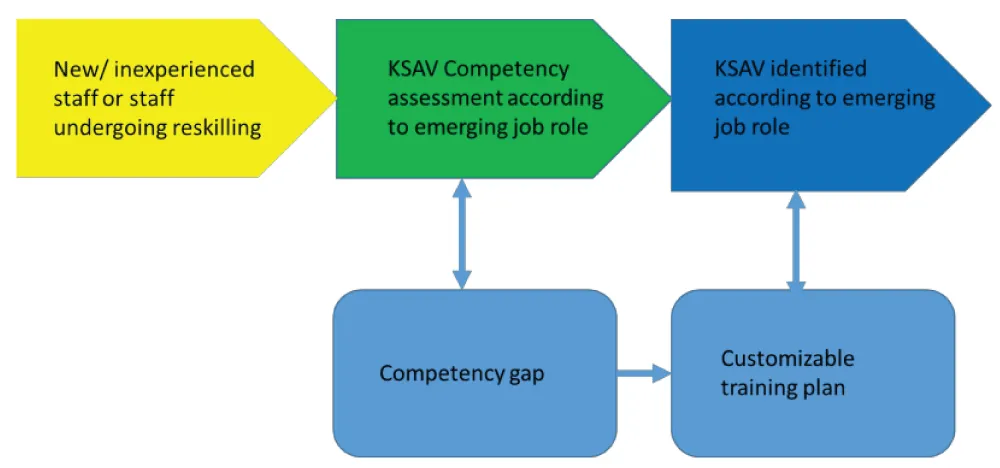 Figure 1: Competency-based training framework....
Figure 1: Competency-based training framework....
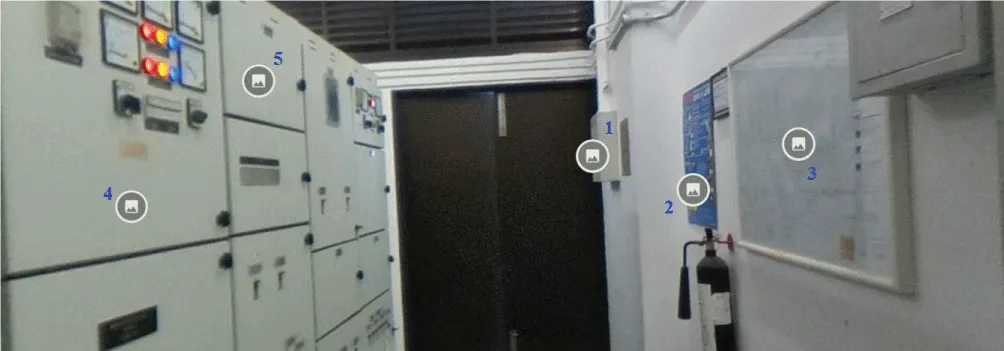 Figure 2: Screenshot of VR Training view within switch-room....
Figure 2: Screenshot of VR Training view within switch-room....
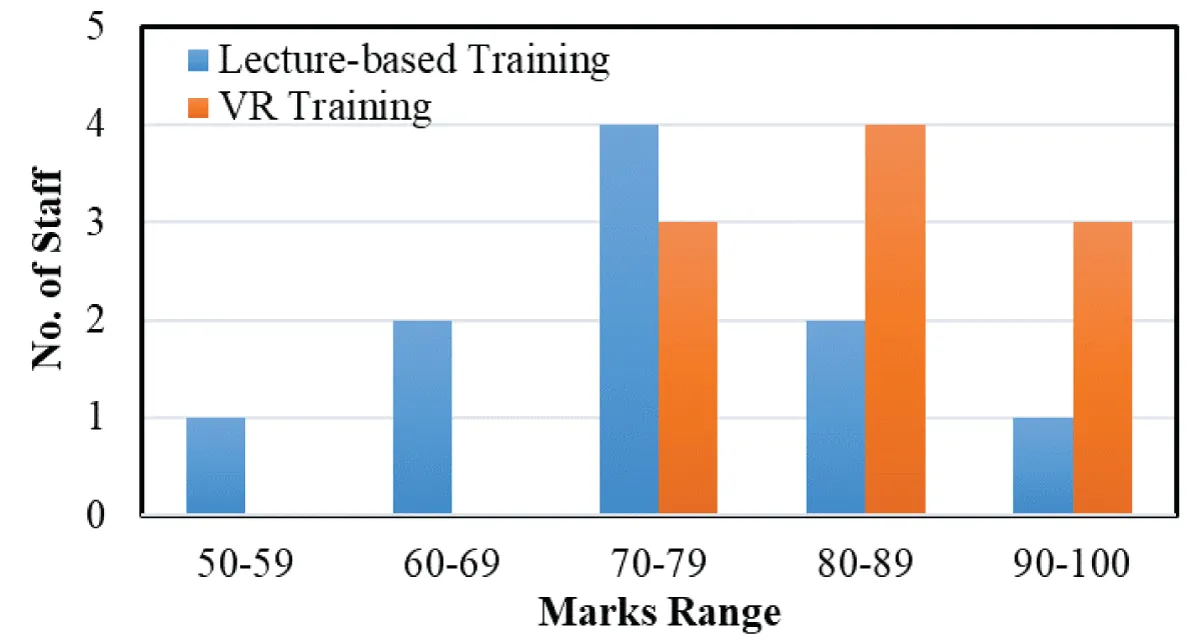 Figure 3: Results from the post-training Quiz....
Figure 3: Results from the post-training Quiz....
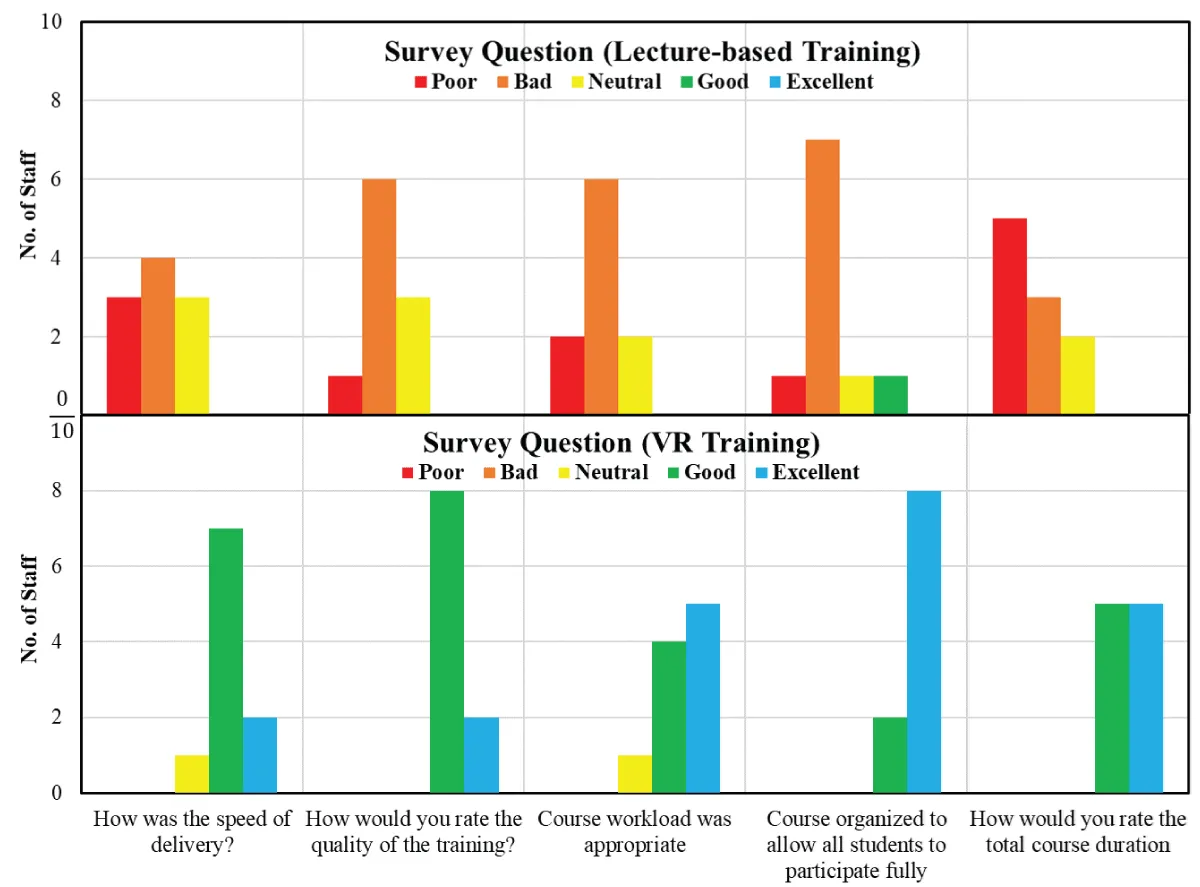 Figure 4: Results from post-training survey (training qualit...
Figure 4: Results from post-training survey (training qualit...
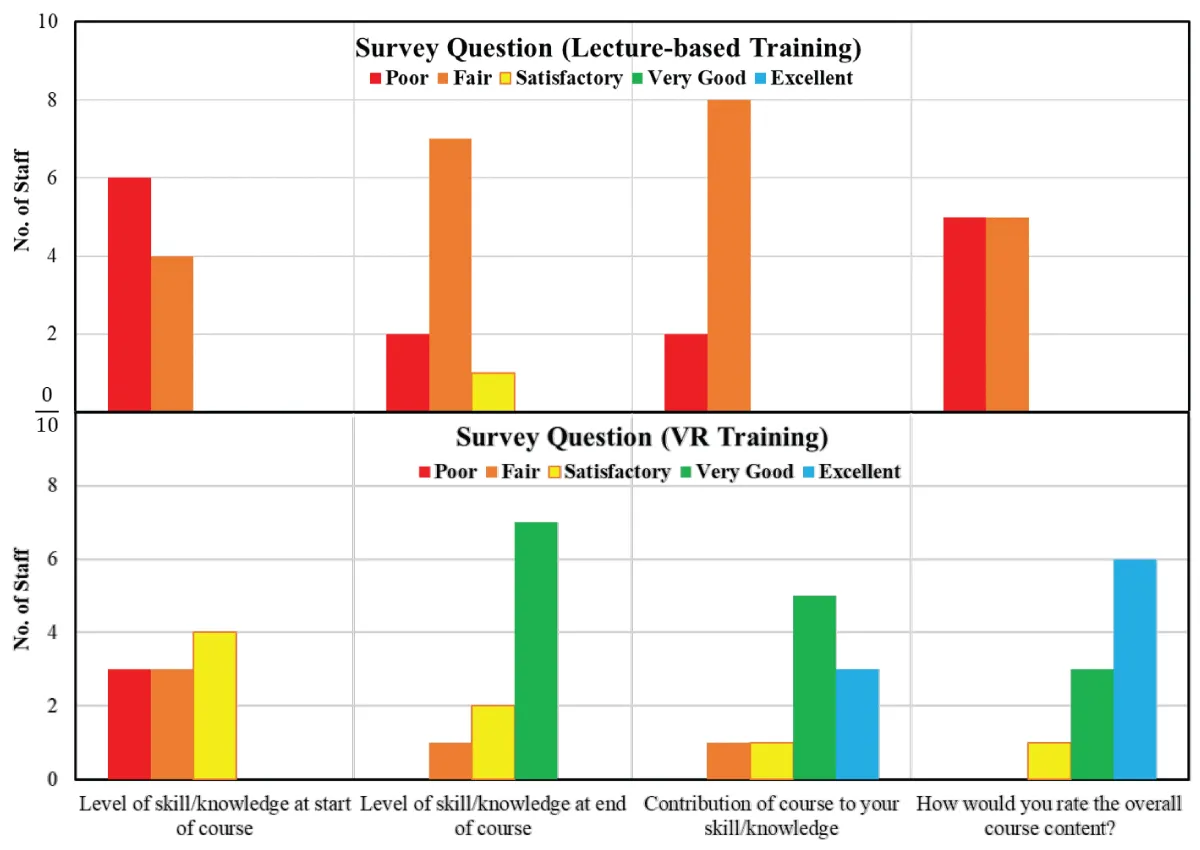 Figure 5: Results from post-training Survey (contribution of...
Figure 5: Results from post-training Survey (contribution of...
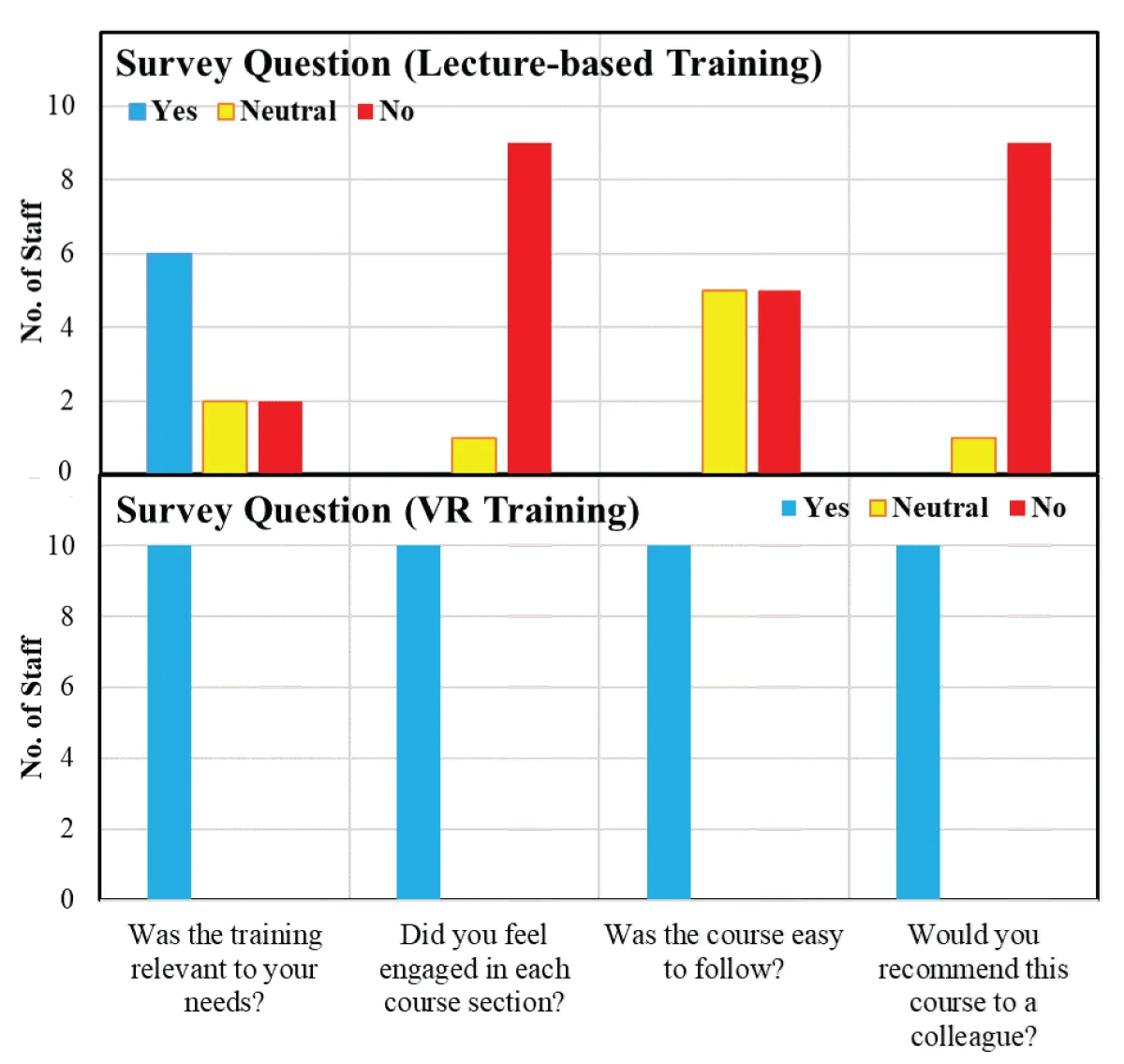 Figure 6: From post-training Survey (training feedback)....
Figure 6: From post-training Survey (training feedback)....
![Study on the Built Environment Workforce in Singapore [43].](https://www.igminresearch.com/articles/figures/igmin165/igmin165.g007.webp) Figure 7: Study on the Built Environment Workforce in Singap...
Figure 7: Study on the Built Environment Workforce in Singap...
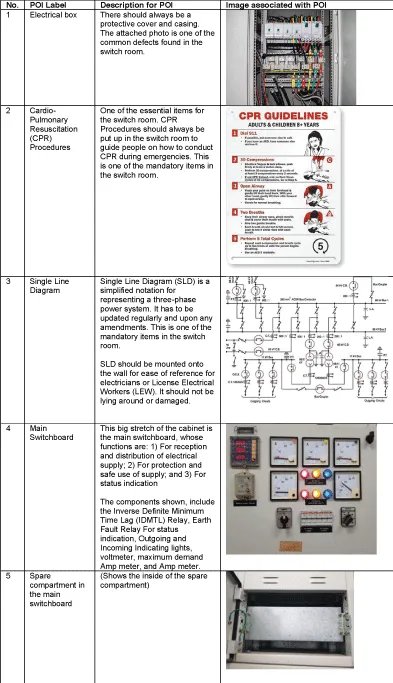 Table 2: Details embedded within each POI shown in Figure 1...
Table 2: Details embedded within each POI shown in Figure 1...
 Table 1: Demographics of candidates....
Table 1: Demographics of candidates....
 Table 2: Details embedded within each POI shown in Figure 1...
Table 2: Details embedded within each POI shown in Figure 1...
Bereiter C. Constructivism, socioculturalism, and Popper's world 3. Educational researcher. 1994; 23: 7; 21-23.
Bruner JS. The act of discovery. Harvard Educational Review. 1961; 31; 21-32.
Piaget J. The psychogenesis of knowledge and its epistemological significance. Language and learning: The debate between Jean Piaget and Noam Chomsky. Harvard University Press. 1980; 23–34.
Bada SO, Olusegun S. Constructivism learning theory: A paradigm for teaching and learning. Journal of Research & Method in Education. 2015; 5:6; 66-70
Azuma RT. A survey of augmented reality. In Presence: Teleoperators & Virtual Environments. 1997; 6: 4; 355-385.
Milgram P, Kishino F. A taxonomy of mixed reality visual displays. IEICE TRANSACTIONS on Information and Systems. 1994; 77:12; 1321-1329.
Bacca J, Baldiris S, Fabregat R, Graf S. Augmented reality trends in education: a systematic review of research and applications. Educational Technology & Society. 2014; 17:4; 133–149.
Radu I. Augmented reality in education: a meta-review and cross-media analysis. Personal and Ubiquitous Computing. 2014; 18:6; 1533-1543.
Altinpulluk H. Determining the trends of using augmented reality in education between 2006-2016. Education and Information Technologies. 2019; 24:2; 1089-1114.
Jesionkowska J, Wild F, Deval Y. Active learning augmented reality for STEAM education - A case study. Education Sciences.2020; 10:
Bower M, Jong MSY. Immersive virtual reality in education. British Journal of Educational Technology. 2020; 51:6; 1981-1990.
Wu HK, Lee SWY, Chang HY, Liang JC. Current status, opportunities and challenges of augmented reality in education. Computers & Education. 2013; 62:41-49.
Lemole GM Jr, Banerjee PP, Luciano C, Neckrysh S, Charbel FT. Virtual reality in neurosurgical education: part-task ventriculostomy simulation with dynamic visual and haptic feedback. Neurosurgery. 2007 Jul;61(1):142-8; discussion 148-9. doi: 10.1227/01.neu.0000279734.22931.21. PMID: 17621029.
Andersen D, Popescu V, Cabrera ME, Shanghavi A, Gomez G, Marley S, Mullis B, Wachs JP. Medical telementoring using an augmented reality transparent display. Surgery. 2016 Jun;159(6):1646-1653. doi: 10.1016/j.surg.2015.12.016. Epub 2016 Jan 21. PMID: 26804823.
Boud AC, Haniff DJ, Baber C, Steiner SJ. Virtual reality and augmented reality as a training tool for assembly tasks. In 1999 IEEE International Conference on Information Visualization. 1999; 32-36.
Reinhart G, Patron C. Integrating augmented reality in the assembly domain-fundamentals, benefits and applications. CIRP Annals. 2003; 52:1; 5-8.
Henderson SJ, Feiner S. Evaluating the benefits of augmented reality for task localization in maintenance of an armored personnel carrier turret. In 2009 8th IEEE International Symposium on Mixed and Augmented Reality. 2009; 135-144.
Gavish N, Gutiérrez T, Webel S, Rodríguez J, Peveri M, Bockholt U, Tecchia F. Evaluating virtual reality and augmented reality training for industrial maintenance and assembly tasks. Interactive Learning Environments. 2015; 23:6; 778-798.
BMW Group. Absolutely real: Virtual and augmented reality open new avenues in the BMW Group Production System, Munich. 2019. Accessed 8 January 2021. https://www.press.bmwgroup.com/global/article/detail/T0294345EN/absolutely-real:-virtual-and-augmented-reality-open-new-avenues-in-the-bmw-group-production-system?language=en
Capuano N, Gaeta A, Guarino G, Miranda S, Tomasiello S. Enhancing augmented reality with cognitive and knowledge perspectives: a case study in museum exhibitions. Behaviour & Information Technology. 2016; 35:11; 968-979.
Hou L, Wang Y, Wang X, Maynard N, Cameron IT, Zhang S, Jiao Y. Combining photogrammetry and augmented reality towards an integrated facility management system for the oil industry. Proceedings of the IEEE. 2014; 102:2; 204-220.
Baek F, Ha I, Kim H. Augmented reality system for facility management using image-based indoor localization. Automation in Construction. 2019; 99:18-26.
Tay TF. Augmented reality push among tech initiatives to help tourism businesses transform. The Straits Times. 2020. Accessed 8 January 2021. https://www.straitstimes.com/singapore/augmented-reality-push-among-tech-initiatives-to-help-tourism-businesses-transform
Stoltz MH, Giannikas V, McFarlane D, Strachan J, Um J, Srinivasan R. Augmented reality in warehouse operations: opportunities and barriers. IFAC-PapersOnLine. 2017; 50:1; 12979-12984.
International Facility Management Association. What is Facility Management? International Facility Management Association. 2020. Accessed 8 January 2021. https://www.ifma.org/about/what-is-facility-management
Ministry of Manpower. Requirements for safe management measures at the workplace, Singapore. 2020. Accessed 8 January 2021. https://www.mom.gov.sg/covid-19/requirements-for-safe-management-measures
Peter B, Hofman WHA. Perceived Effects of Competency-Based Training on the 980 Acquisition of Professional Skills. International Journal of Educational Development. 2014; 36:81-981 89.
Lombardo FE, Jacks LJ. Competency-Based Training for Air Traffic Control Specialists. The International Journal of Aviation Psychology. 2002; 12(3):291-307. DOI: 10.1207/S15327108IJAP1203_6
Huang HM, Liaw SS. An analysis of learners’ intentions toward virtual reality learning based on constructivist and technology acceptance approaches. International Review of Research in Open and Distributed Learning. 2018;19: 1; 91-115.
Wang M, Callaghan V, Bernhardt J, White K, Peña-Rios A. Augmented reality in education and training: pedagogical approaches and illustrative case studies. Journal of Ambient Intelligence and Humanized Computing. 2018; 9:5; 1391-1402.
Kennedy RS, Lane NE, Berbaum KS, Lilienthal MG. Simulator sickness questionnaire: An enhanced method for quantifying simulator sickness. The International Journal of Aviation Psychology. 1993; 3: 3; 203-220.
LaViola JJ. A discussion of cybersickness in virtual environments. ACM Sigchi Bulletin. 2000; 32:1; 47-56.
Kolasinski EM. Technical Report 1027: Simulator sickness in virtual environments.US Army Research Institute for the Behavioural and Social Sciences. 1995.
Howarth PA, Costello PJ. The occurrence of virtual simulation sickness symptoms when an HMD was used as a personal viewing system. 1997; 18:2; 107-116.
Cobb SV, Nichols S, Ramsey A, Wilson JR. Virtual reality-induced symptoms and effects (VRISE). Presence: Teleoperators & Virtual Environments. 1999; 8: 2; 169-186.
Davis S, Nesbitt K, Nalivaiko E. Comparing the onset of cybersickness using the Oculus Rift and two virtual roller coasters. In Proceedings of the 11th Australasian Conference on Interactive Entertainment. 2015; 27:3-14
Rebenitsch L, Owen C. Individual variation in susceptibility to cybersickness. In Proceedings of the 27th annual ACM symposium on User Interface Software and Technology. 2014; 309-317.
Rebenitsch L. Managing cybersickness in virtual reality. XRDS: Crossroads, The ACM Magazine for Students. 2015; 22: 1; 46-51.
LaViola JJ, Jr, McMahan RP. A survey of methods for reducing cybersickness. In Virtual Reality (VR). IEEE. 2017; 619-620.
Xu X, Lu Y, Vogel-Heuser B, Wang L. Industry 4.0 and Industry 5.0 – inception, conception and perception. Journal of Manufacturing Systems. 2021; 61:530-535.
Adel A. Future of industry 5.0 in society: human-centric solutions, challenges and prospective research areas. J Cloud Comput (Heidelb). 2022;11(1):40. doi: 10.1186/s13677-022-00314-5. Epub 2022 Sep 8. PMID: 36101900; PMCID: PMC9454409.
Maddikunta P, Pham Q, Prabadevi B, Deepa N, Dev K, Gadekallu T, Rukhasana R, Liyanage M. Industry 5.0: a survey on enabling technologies and potential applications. Journal of Industrial Information Integration. 2022.
Ernst and Young. Study on the Built Environment Workforce in Singapore. Job Transformation Map for the BE Sector Public Report.